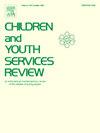“They just want people in their lives that will be there forever”: A conceptual model of permanency for children and young people in therapeutic residential care
IF 2.4
2区 社会学
Q1 FAMILY STUDIES
引用次数: 0
Abstract
In Australian child protection systems, permanency outcomes are primarily equated with stability in a child’s living and caring arrangements. For some children this will mean restoration to family, but for many others it will involve long-term Out-of-Home Care (OOHC), including with extended family. When viewed through the lens of living and caring arrangements, permanency policies by necessity exclude children and young people in residential care, for whom their caring arrangement is intended to be time-limited – that is – impermanent. However, for some children and young people, residential care is the only ‘permanent’ placement option that is available. Understanding whether and how permanency is considered and operationalised within residential care contexts is therefore an important, but largely absent area of research and policy. This paper describes a conceptual model of permanency for children and young people in therapeutic residential care programs in four Australian states. In-depth interviews and focus groups were conducted with 21 participants from therapeutic residential care providers in New South Wales, Victoria, Queensland and South Australia. Using Reflexive Thematic Analysis, we propose a conceptual model that places a child and young person’s sense of connection and belonging at the centre of permanency. This necessitates creating safe, stable environments that foster safe and enduring relationships with unpaid carers and other key people who are meaningful to the child. We discuss the implications of embedding a relational understanding of permanency within therapeutic residential care programs to improve the wellbeing of children and their families.
求助全文
约1分钟内获得全文
求助全文
来源期刊

Children and Youth Services Review
Multiple-
CiteScore
6.30
自引率
6.10%
发文量
303
期刊介绍:
Children and Youth Services Review is an interdisciplinary forum for critical scholarship regarding service programs for children and youth. The journal will publish full-length articles, current research and policy notes, and book reviews.
 求助内容:
求助内容: 应助结果提醒方式:
应助结果提醒方式:


